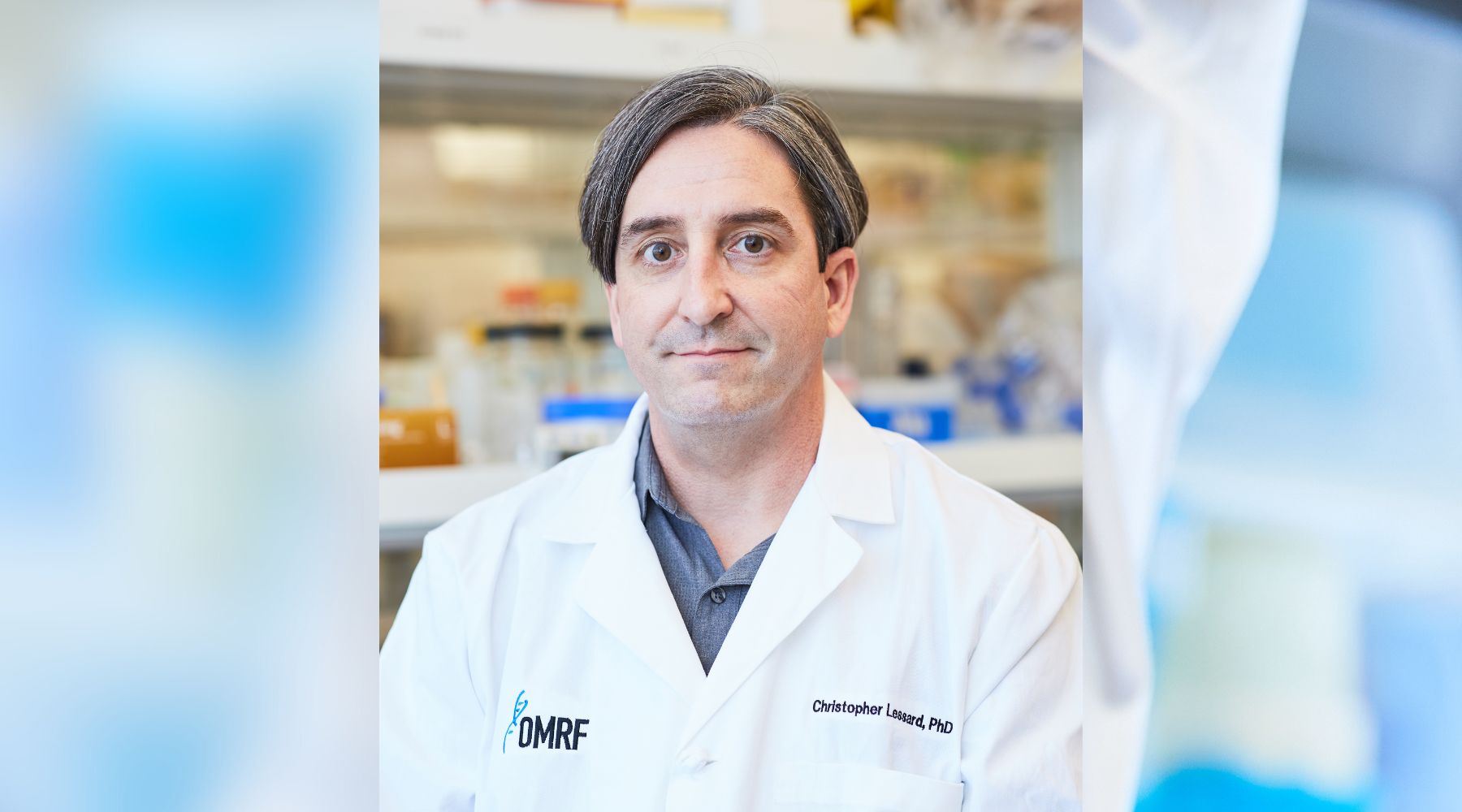The Sjögren’s Foundation has awarded its first Dynamic Research Award to an Oklahoma Medical Research Foundation scientist to continue genetics research on Sjögren’s, an autoimmune disease.
Scientist Christopher Lessard, Ph.D., leads the international Sjögren’s Genetics Network of scientists, which recently discovered 10 new genetic risk regions for the disease by analyzing the genotypes of about 3,200 people with Sjögren’s. This study, the largest to date of its kind, provides a glimpse into how genes associated with Sjögren’s may operate in salivary glands and other organs to contribute to the disease.
The Sjögren’s Foundation developed the two-year, $150,000 grant for critical, time-sensitive work that falls outside its normal grant cycle, said Janet Church, the organization’s president and CEO.
In Sjögren’s, immune cells attack moisture-producing glands. Its most common symptoms are painful dry eyes and mouth, but Sjögren’s can cause wide-ranging complications, including debilitating fatigue, hypothyroidism and an increased risk of malignant lymphomas. There is no known cure for the condition, which disproportionately affects women and is estimated to affect as many as 3.1 million people in the U.S.
Investigating the complex genetic risk of Sjögren’s requires thousands of genotypes from people with the condition. The grant allows Lessard and colleagues to study DNA samples from volunteers worldwide. Their goal is to triple the existing study population to 10,000 people with Sjögren’s.
“Our research will provide a glimpse into how genes may function in salivary glands and other organs to contribute to disease,” Lessard said. “So far, scientists have identified 22 gene regions, but we suspect many more genes are involved. By comparison, scientists have identified more than 150 gene regions associated with related diseases, such as lupus.”
“The Sjögren’s Foundation is thrilled to award our first Dynamic Research Award to expand Dr. Lessard’s project,” Church said. “Sjögren’s is a complicated and serious autoimmune disease. This research has potential to uncover mysteries that can improve diagnosis of disease manifestations as well as treatment options for patients.”
Lessard’s research is also supported by grant No. R01AR073855 from the National Institute of Arthritis and Musculoskeletal and Skin Diseases, part of the National Institutes of Health. For more information about ongoing Sjögren’s research at OMRF, visit www.omrf.org/sjogrens.



